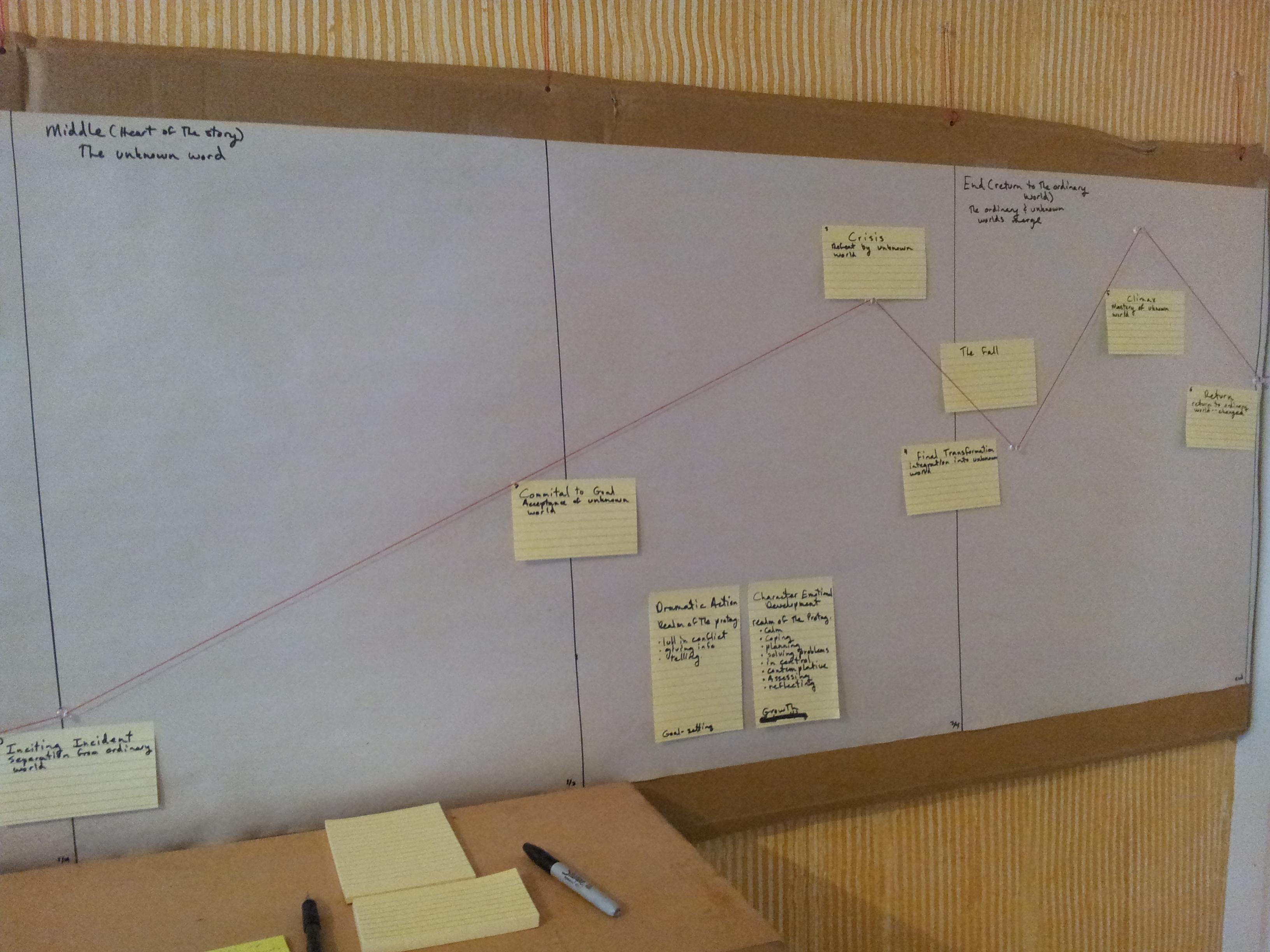
So, the last two post have been about identifying theme in your writing, with a really great method from Jesikah Sundin and some awkward attempts by yours truly.
Today I’m asking the question: Why should you identify the themes in your own writing?
Whether you understand your own themes before you write a single word, or discover them by the time you’re done drafting (or publishing, like some of us), understanding theme gives you greater control over your writing. Not knowing what themes are present in your book is kind of like giving a talk without an understanding of what you want the listeners to come away knowing. If you know your themes, you can both focus and deepen them.
Not understanding your themes can lead to the writing being shallow–i.e. you start to say something, but don’t take it all the way. The result of this can be the readers asking, so what? A bunch of stuff happened (blah, blah, blah) but nobody cared.
Conversely, not understanding your theme could also lead to is a myriad of confused, contradictory themes running through the work. The themes might change halfway through, or just be too many for the readers to keep together. While there should be several themes in a book, there should be, as Jesikah said, a prevailing subject and a specific theme that the main plot of the book is centered around.
If you spend time identifying the themes in your book, you can fully flesh them out and cull out the distracting ones. Further, you can tailor the book to ensure that the themes really come through to the readers.
Characters as Thematic Symbols
One of my themes in Dream of a Vast Blue Cavern is leadership, etc; several of the characters exemplify this theme. Stasia and Larc in particular have to form their own bond with leadership, against steep odds. The development of the characters and their actions bring out the theme in the book. Make sure, though, not to have characters be one dimensional in their portrayal of a theme. Each main character should still be complex and interesting, not completely archetypal.
Plot as Portrayal of Theme
In genre fiction in particular, what happens can be a potent vehicle for theme. In fact, your plot should reflect the theme in your book. Plot is kind of like evidence for the message. Remember five paragraph essays, where you stated your thesis (which is basically a non-fiction theme) then provided evidence backing up the thesis? The major events in your book should point readers toward a new level of understanding of the subjects you are dealing with.
Setting as a Symbol
Jesikah already covered how symbolism brings out theme in a book–metaphor, talismans, colors, weather, etc. Let me take this one step further: the entire setting can be a symbol for themes you are trying to convey. In Jesikah’s Legacy, the biodome is a setting representing the theme regarding the Cycle of Life. A deserted wasteland can symbolize the desolation of war refugees. A mountain or an ocean can symbolize an insurmountable obstacle. A city can symbolize the hedony of its citizens, a monastery can symbolize an ascetic life. And so on . . . but as with character, make sure the setting lives on its own and doesn’t just exist out of context as a vehicle for theme.
Dialog and Theme: OK but Be Careful
Yes, theme can come out in dialog, both verbal and a character’s internal dialog, but with a caveat. How might theme come out in dialog? As your characters understanding changes, they might realize things they didn’t know before. Things like, “I think I’m becoming my father!” or “Oh! This is what leadership means. I have to make the decisions no one else is willing to make.” The caveat: it has to sound natural and fit the story. It can’t be embedded in the story solely to convey theme. It has to match the way the character would talk and think. Some characters would never get that introspective. Don’t let those characters have this kind of dialog. Only the deep characters are allowed to do this.
Do Not Use Exposition to Convey Theme
The one method you do not want to use to convey theme is exposition. Why not? Because exposition is telling, and once you start telling readers what they are supposed to take away from your writing, it loses its impact. It starts to sound like Aesop’s Fables rather than top-shelf fiction. This is one of the biggest risks you run in knowing your themes–the urge to state them blatantly in the text. But ironically, when you do this, it weakens your message. You can’t ever tell Theme. You have to make the reader feel it.
Do you like to identify Themes in your work, or are you scared of theme like me? Have you experienced the control that understanding your themes can give you?
That’s it for this week, as I’ll be out of town for a few days. Next week I’ll start in on the next section of 101 Things I Wish I’d Known Before I Wrote My First Book: Putting it all together, from planning, drafting and re-writing to revising, editing and assembling a book.
This post is part of a series of 101 Things I Wish I’d Known Before I Wrote My First Book. Start reading the series at the beginning.
If you’re enjoying this series, please sign up for my email newsletter for a monthly update on appearances, book releases, giveaways, special deals, and a blog round-up!




One thought on “101 TIWIK #44: Why Identify Theme?”